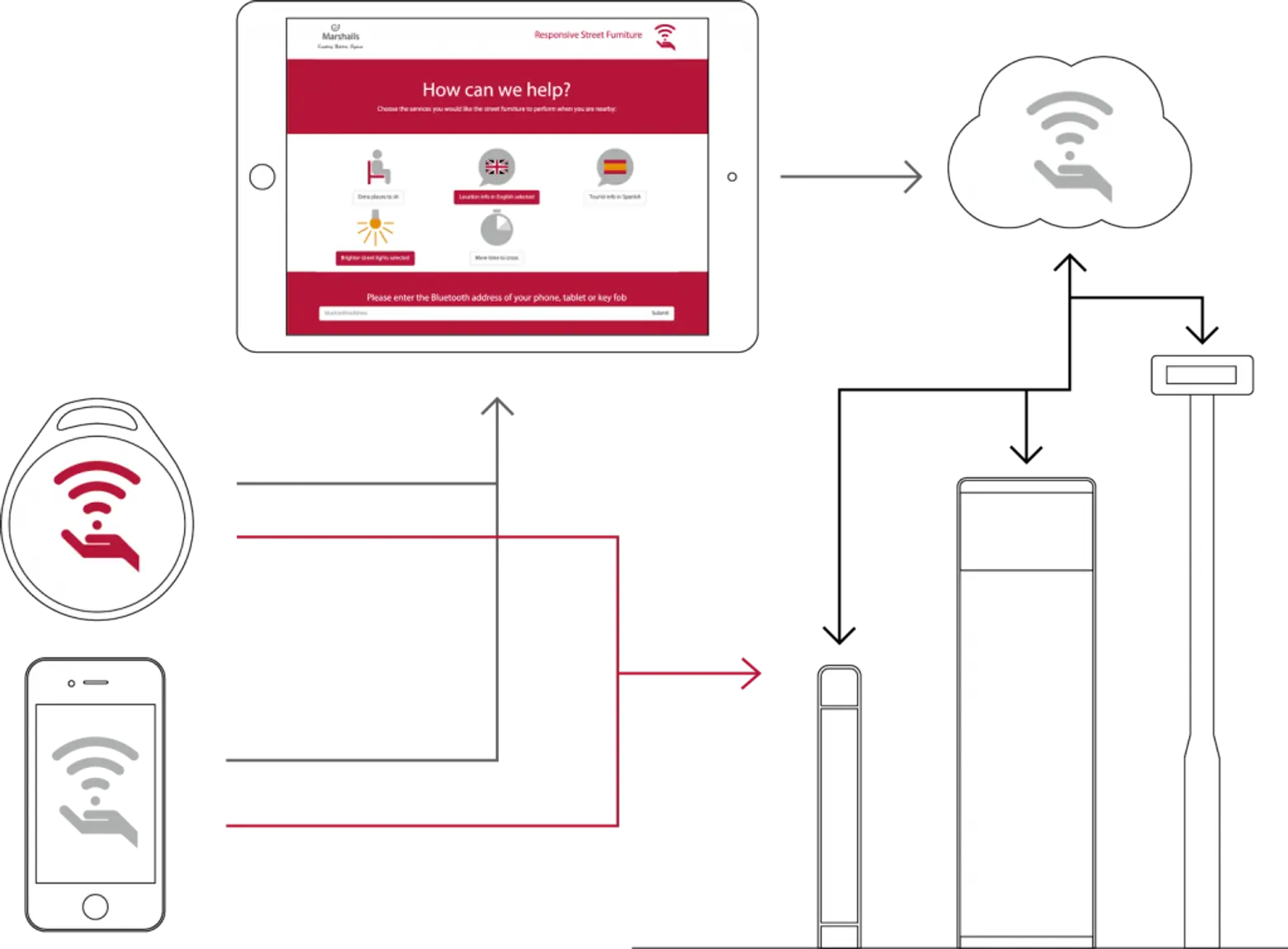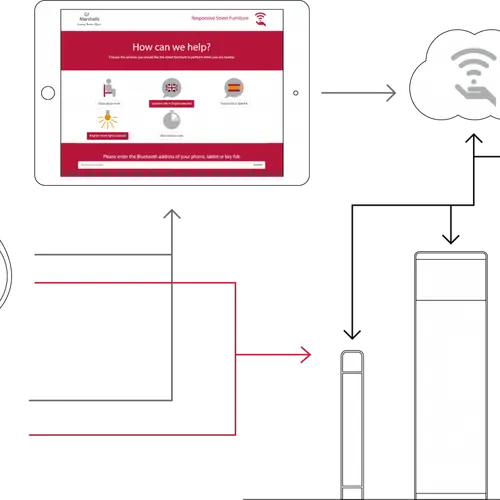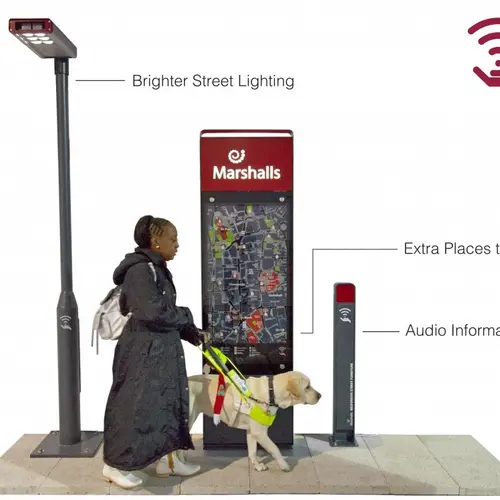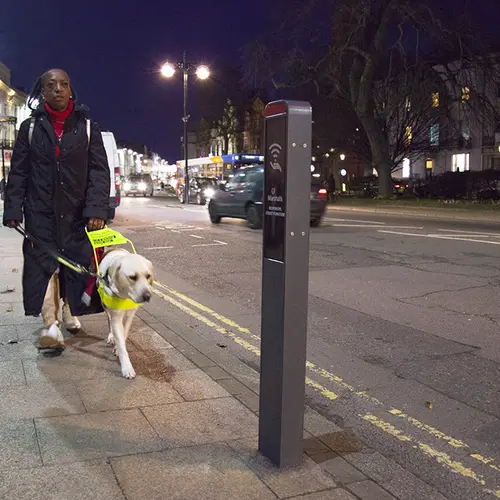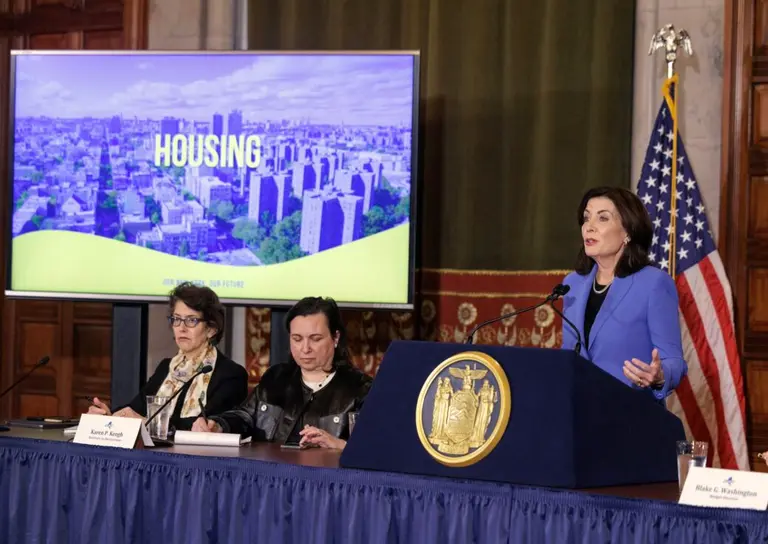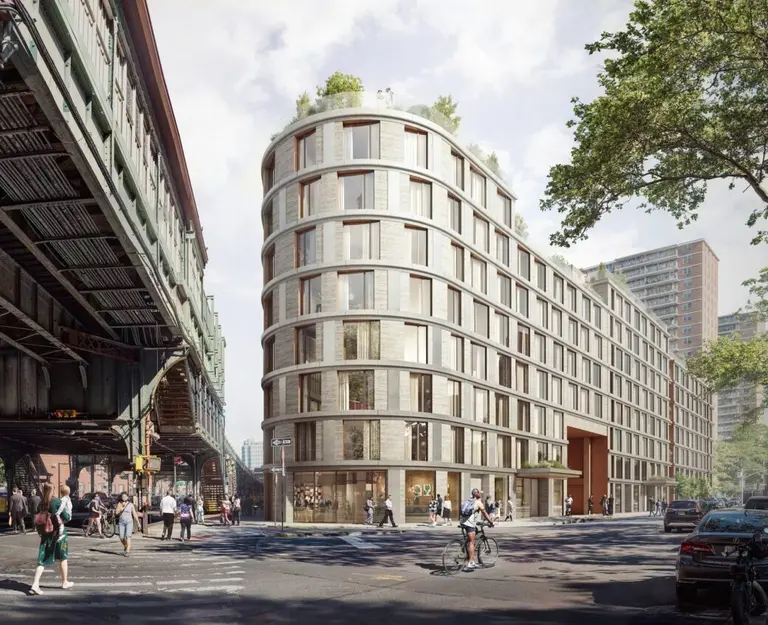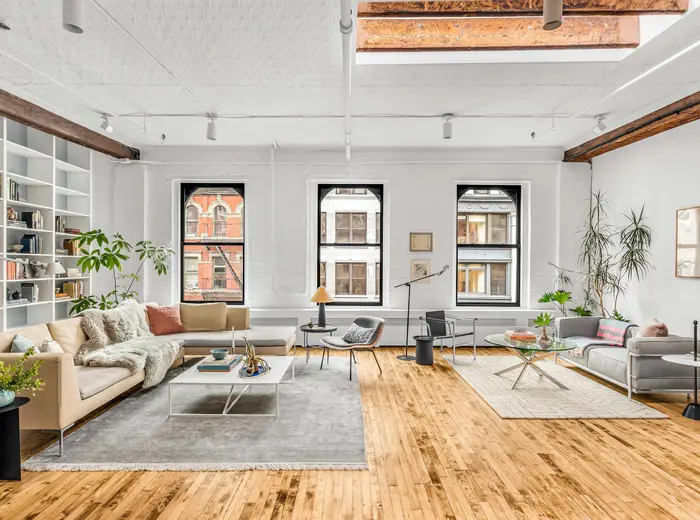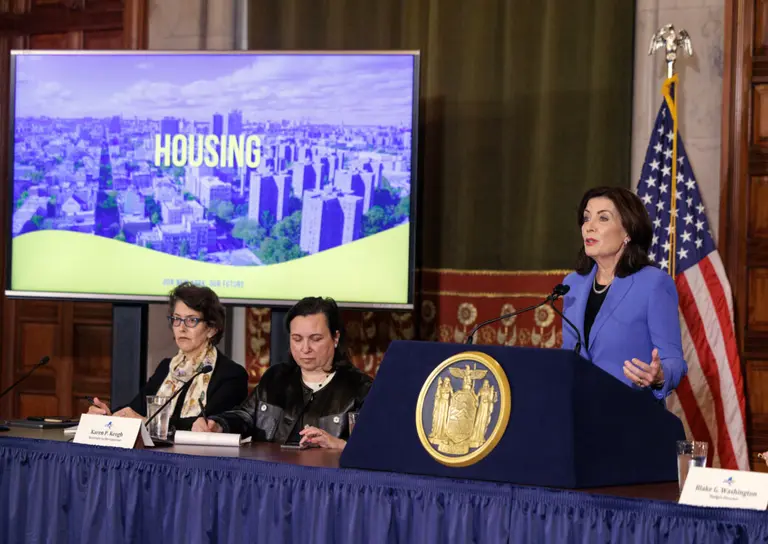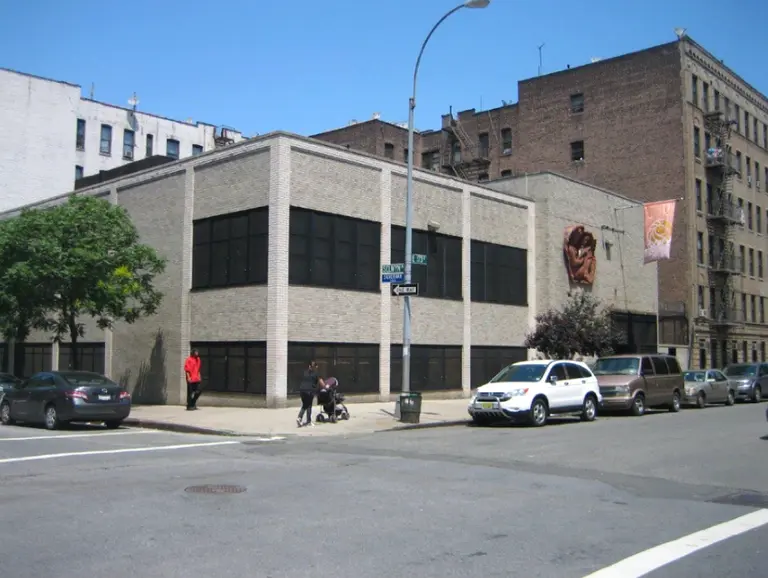Smart Street Furniture Responds to the Needs of the Blind, Elderly and More
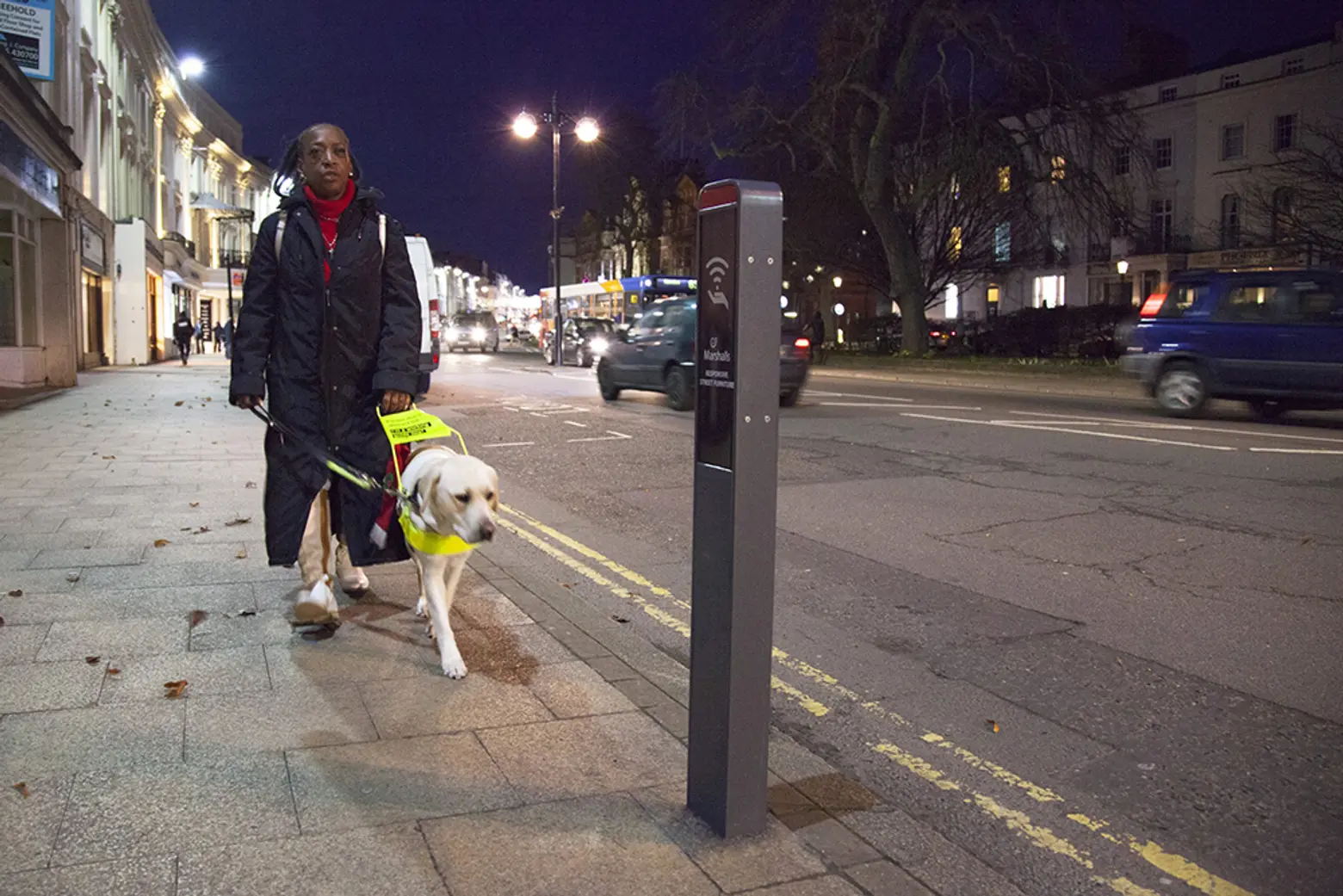
Bullet trains, self-driving cars, autonomous people-moving pods, windowless jets with panoramic views of what’s outside—transportation is without question rapidly evolving, but at the more basic level, infrastructure remains relatively unchanged in most major cities. The design of street lamps, crosswalks and other street furniture is generally a one-size-fits-all game that follows the needs of the average user, but the reality is that it takes far longer for an elderly woman to make her way across a busy intersection than it does a teen.
Enter UK designers Ross Atkin and Jonathan Scott of RAA who have developed a system of “responsive street furniture” that adapts to the needs of the people using them. This means if you need more light, the street lamps will adjust. More time to cross? Done. Need to rest? A seat will unlock. And when a blind person walks past a streetlight, the post will read out the name of the store in front to help them orient themselves.
So how does it work?
The system uses everything we all have access to: Wi-Fi and smartphones. A user will register once with the ID of their smartphone or a key fob, and then input what kind of help they would like the system to provide them (to maintain privacy, no e-mail address, phone number or any other personal details are required). The ID basically follows them around, signaling to the smart furniture to respond as they approach. As previously mentioned, this can mean brighter street lighting, audio information (in various languages even!), extra places to sit, or more time to cross the road, depending on what their settings are.
DEMONSTRATION OF THE WORKING PROTOTYPE:
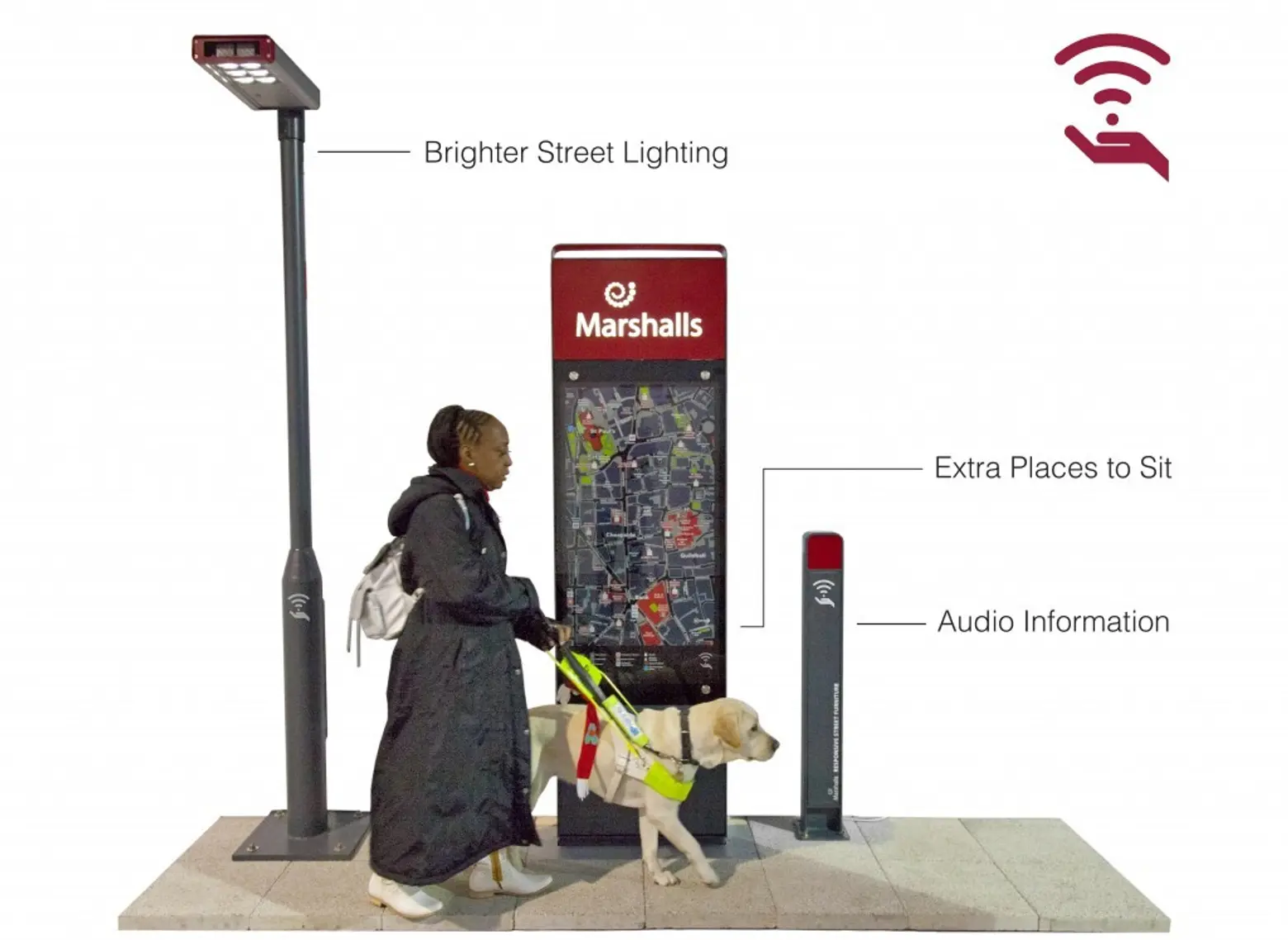
“Working on research shadowing disabled people as they move through public space I was struck by how much of the design of our streets was defined by a tradeoff between the needs of different people,” Atkins writes on his site. “Features that may advantage one group (like more places to sit) might disadvantage another (by reducing the width of the pavement for example). In contrast accessibility in the digital world of smartphones, tablets and websites is all about adaptability. Responsive Street Furniture is the result of applying this principle to the street, of moving away from a one-size-fits-all approach towards an adaptable one.”
The designers say that implementing these pieces would be relatively simple, as they can be installed as additions to existing infrastructure, rather than requiring a city to start from scratch. They can also be added to accommodate select areas at first at then expanded. And better yet, the technology is well past its R&D stage (less a few program tweaks) and ready to be applied to any city that will have them. Working prototypes of the system have been installed in London’s Design Museum and outside an organization called New London Architecture.
ANIMATION OF HOW IT COULD WORK IN THE REAL WORLD:
You can see more innovative designs from RAA here.
[Via Fast Co.]
RELATED:
- ‘Human’ Smartphone App Tracks How New Yorkers Move Through the City
- Google-Backed Pedal-Powered Pod Cars Coming to a City Near You?
- New App YoTrain! Will Let You Know if You’re About to Miss the Subway
All images courtesy of RAA
